Here is a 5-minute clip (found here) on representations of female athletes in the media. It is from the documentary “Playing Unfair.”
Thanks to John for mentioning this documentary in a comment.
Here is a 5-minute clip (found here) on representations of female athletes in the media. It is from the documentary “Playing Unfair.”
Thanks to John for mentioning this documentary in a comment.
What is the relationship between the denigration of men as men and patriarchy? So long as we buy into the idea that we can’t expect men to be good partners or fathers, we will tolerate women’s responsibility for the second shift and their placement on the mommy track at work. So the Homer Simpson-esque sitcom dads and the Jackass teenagers, while incredibly degrading to men, also serve to perpetuate patriarchy.
Case in point:
Jessica at Feministing writes that this ad:
…feed[s] into the sexist idea that men deserve a cookie for being halfway decent human beings, but it also denigrates men by suggesting that they’re animals, unable to resist any ass that that happens to pass their way.
Another excellent example here.
Grand Theft Auto is a notoriously violent and controversial video game. Writes Bill Marsh at the New York Times:
Game players inhabit a gangster who is equipped to dispatch scores of rival criminals and others, including police officers and innocent bystanders, on the rough streets of Liberty City, the bullet-riddled stand-in for New York… The latest… allows players to hire prostitutes and then run them over or shoot them right after they’ve performed their work…
Here is a visual that compares the spectacular success of Grand Theft Auto (measured by units sold and profits) with the most successful music and movies:
This is from the WNBA’s website–it’s their Dads and Daughters page. When I first came upon it, I assumed it highlighted the fathers of WNBA players. There’s a Dad of the Week section and a schedule of games that have a Dads and Daughters event. But the Dads of the Week aren’t necessarily related to anyone on the team. They’re just dads who are being highlighted–one Dad of the Week is the Executive Vice President of Products at AOL. How the Dads of the Week are chosen is not clear.
I went to the NBA website and looked around, and unless I’m missing something, there is no Moms and Sons (or even Dads and Sons) page.
I have a theory about this. From the beginning, one problem the WNBA faced was not appearing to be a “lesbian league,” which would presumably alienate advertisers and audiences. To highlight the femininity of the players (because pretty girls who wear makeup can’t be dykes, right?), players were encouraged to wear makeup (and were even sent on Oprah to get makeovers) and players with husbands, boyfriends, and children were photographed with them and their profiles made sure to stress their family roles. When the WNBA began, the website had a forum about the uniforms (potential colors, shapes, styles, etc.), and there was some discussion of making the players wear skirts. [For an interesting discussion of gender in the WNBA, check out: Sarah Banet-Weiser. 1999. “Hoop Dreams: Professional Basketball and the Politics of Race and Gender.” Journal of Sport & Social Issues 23: 403-420.]
The Dads and Daughters page fits into the efforts to make the WNBA seem “family friendly,” i.e., not lesbian. The importance of men in women’s lives is reaffirmed (and also the idea that girls get their athletic abilities from their dads, not their moms). It makes it clear that the WNBA is not a “women only” social space.
The NBA has no need for a similar emphasis on women because we assume that male athletes are heterosexual (in fact, playing sports is one of the ways men prove they aren’t gay).
The comedy troupe goes by “Barats and Bereta.” Enjoy their youtube site.
Thanks Kyle S.!
Lisa Wade, PhD is an Associate Professor at Tulane University. She is the author of American Hookup, a book about college sexual culture; a textbook about gender; and a forthcoming introductory text: Terrible Magnificent Sociology. You can follow her on Twitter and Instagram.
This McDonald’s Is All Out Of “Boy Toys,” via The Consumerist
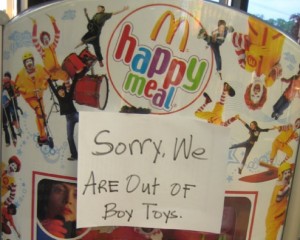
The propaganda below, from World War II, was distributed by the U.S. government. In the posters, venereal disease (later known as sexually transmitted disease, and even later as sexually transmitted infections) is personified as a woman. Remember, venereal disease is NOT a woman. It’s bacteria or virus that passes between women and men. Women do not give it to men. Women and men pass it to each other. When venereal disease is personified as a woman, it makes women the diseased, guilty party and men the vulnerable, innocent party.
In this ad, the soldier is made innocent with the label “The Young, The Brave, The Strong.” The first girl is labeled “prostitution.” She says to the soldier: “Two girls I know want to meet you in the worst way.” The two women on the stairs, with the faces of skeletons, are labelled “syphilis” and “gonnorhea.”
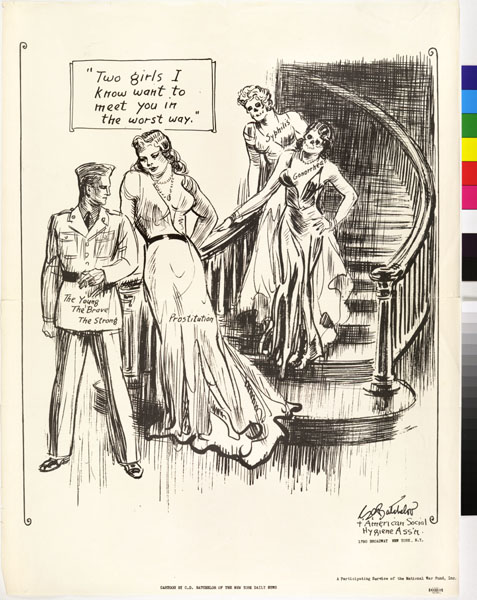
Text: “Warning: These enemies are still lurking around.” The women are labeled “syphillis” and “gonnorhea.”
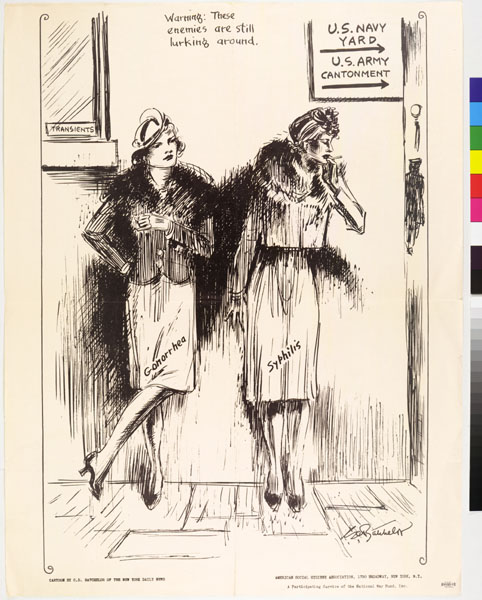
This one is my favorite. A female skeleton in an evening gown walks with her arms around Hitler and Hirohito. The text reads: “V.D. Worst of the Three.”
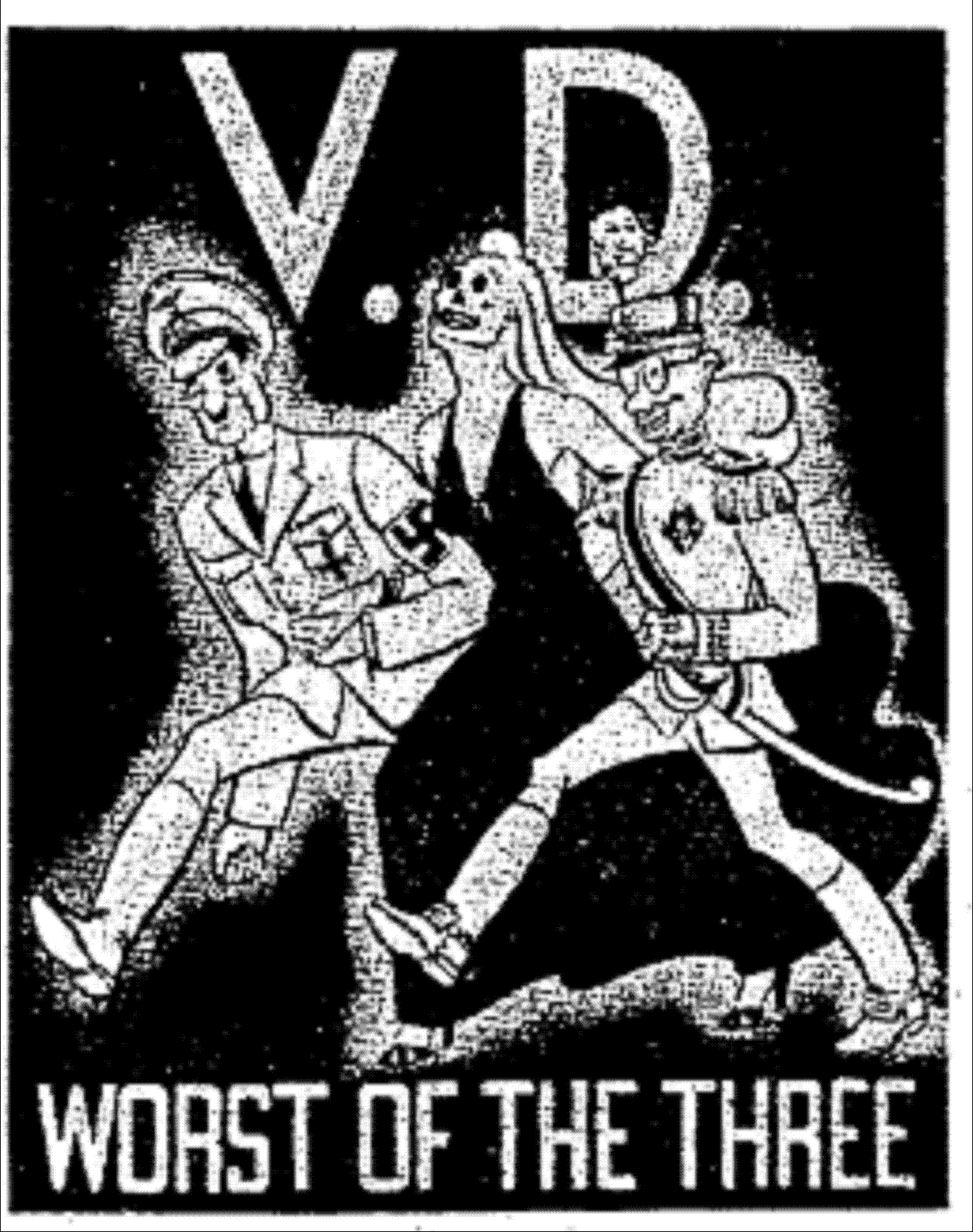
Here are three more:
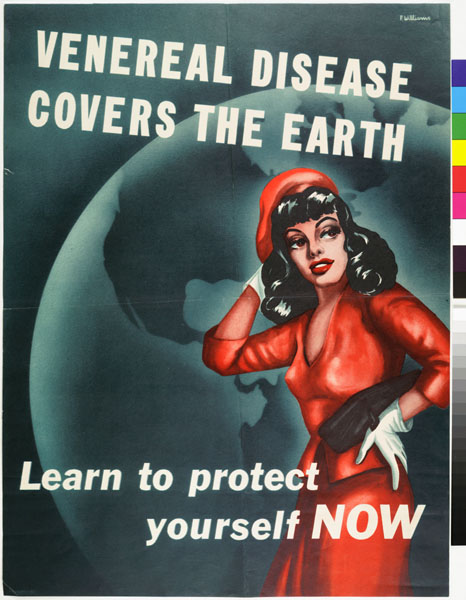
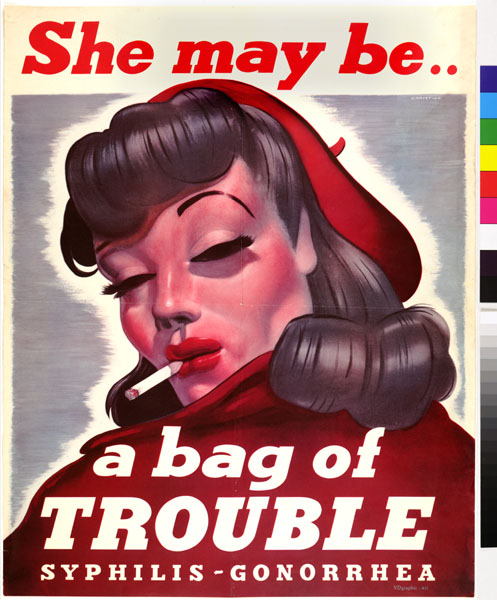
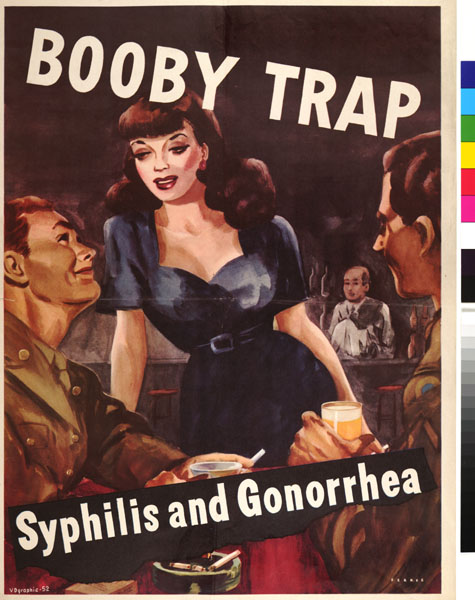
At least some of these can be found here. Thanks to the unbeatablekid pointing out a source in our comments.
NEW: Marc sent us a link to these images (all found here):
A pamphlet distributed to soldiers:
Thanks, Marc!

This “Onslaught” ad by Dove has garnered a lot of attention and positive press:
The idea, of course, is that we need to protect our daughters from the images that may harm their self-esteem or make them uncomfortable about their bodies. A great message, no doubt.
However, corporate activism usually has limits and contradictions (as do most things in life, really). Miguel sent us this ad spoof that points out that many of the images the Dove ad says we should be protecting our daughters from are actually used in Axe ads–and Axe is owned by Unilever, the same company that owns Dove.
So Unilever manages to target both markets–those who respond to sexualized images and those who find them harmful–through different brands. This is a common tactic–because large multinational companies own so many different brands, they can market to many different groups of consumers; when we reject one product because of its production process or advertising and buy another instead, there’s a very good chance we’re buying from the same corporate entity, just a different brand name.
As one blogger nicely put it:
It’s a parent’s responsibility to make sure the damaging messages they themselves produce don’t reach your kids.
That is, Dove is telling parents to protect their kids, as if Dove CARES, but Dove’s parent company is producing those very same messages. (It’s kind of like a single corporation owning a beer company and running Alcoholics Anonymous. How very convenient for both.)
A commenter pointed out that Greenpeace made an ad based on Dove’s “Onslaught” commercial that brings up the effects of palm oil production in the destruction of forests in Indonesia:
Thanks, Dangger!
NEW: There is a terrific post at Moment of Choice about one woman’s experience auditioning for a Dove Real Woman commercial. From the post:
Under the guise of looking for women who felt truly comfortable in their own skin, no matter what they looked like, they asked us to bare all or most of it, to prove just how comfortable we really were…A young peppy assistant demonstrated how they wanted us to shake our hands in the air like we just didn’t care and do a full 360 for the camera and male judging panel.
It’s a fascinating inside look at a process most of us never take part in, and reinforces the fact that corporate activism often covers an awful lot of business-as-usual behind the scenes.